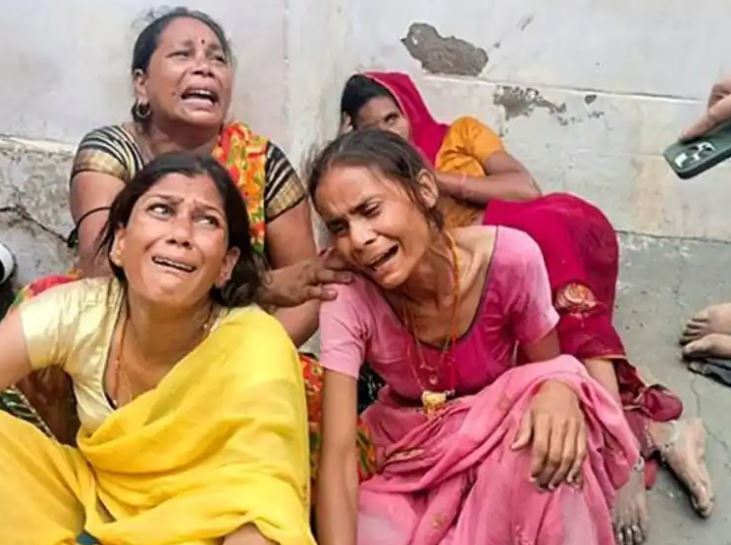The Urgent Need for Crowd Control Measures at Mass Gatherings
The recent stampede at a religious congregation in Hathras, Uttar Pradesh, underscores the critical necessity for stringent crowd control measures. This calamity, which claimed over 120 lives, is a stark reminder of the recurring tragedies at mass gatherings in India. Despite the availability of advanced technology and communication tools, effective crowd management remains elusive.
A Grim Pattern of Avoidable Tragedies
The Hathras stampede is not an isolated incident. Over the past two decades, India has witnessed several such tragedies. The latest incident occurred when an estimated 2.5 lakh people congregated in Fulrai village to hear preacher Suraj Pal, also known as Narayan Sakar Hari or “Bhole Baba.” The venue, designed to accommodate a maximum of 80,000 people, was grossly overcrowded. The resultant chaos led to the deaths of many, primarily women and children from economically vulnerable sections, seeking spiritual solace.
Inadequate Preparation and Response
Initial reports suggest that overcrowding and the scramble to collect soil from around the preacher’s feet triggered the stampede. The aftermath exposed the Uttar Pradesh administration’s lack of preparedness. Visuals of bodies lying outside post-mortem centers and distressed relatives underscored the inadequacy of medical staff and ambulances. Shockingly, the preacher and his aides reportedly abandoned the site as panic ensued, exacerbating the tragedy.
The Role of Proactive Administration
The most tragic aspect of the Hathras stampede is its preventability. Proactive steps by a vigilant administration could have averted the disaster. Unfortunately, authorities in many states fail to learn from past incidents or leverage available technologies. Ensuring safety at mass gatherings requires more than just punitive measures against those responsible. It demands a comprehensive approach involving meticulous planning and execution.
Implementing Effective Crowd Control Measures
To prevent such tragedies, the Uttar Pradesh administration must ensure just compensation for the victims, funded by the event organizers. This incident serves as a case study in effective crowd management. Authorities must guarantee that organizers possess the necessary resources to handle large crowds. Pre-event drills should be mandatory to prepare for any eventuality.
The Importance of Conscious Administration
Political executives, bureaucrats, and event organizers must recognize that the loss of even one life is a profound tragedy for the victim’s family. This awareness should govern the planning and execution of mass gatherings. Ensuring safety at such events is a collective responsibility that demands coordination and accountability at all levels.
Learning from Past Mistakes
Repeated incidents of stampedes highlight a systemic failure to learn from past mistakes. It is imperative that authorities utilize advanced crowd management techniques and technology to prevent overcrowding and ensure swift responses to emergencies. Lessons from past tragedies must inform future policies and practices.
Conclusion: A Call to Action
The Hathras stampede is a tragic reminder of the urgent need for effective crowd control measures. Proactive administrative steps, stringent enforcement of safety regulations, and the use of advanced technology can prevent such avoidable tragedies. Ensuring the safety and well-being of individuals at mass gatherings must be a paramount concern for all stakeholders involved.
Summary:
| Key Learning Points |
|---|
| The Hathras stampede highlights the need for stringent crowd control measures. |
| Overcrowding and inadequate preparation led to the tragic incident. |
| Proactive administration and advanced technology can prevent such tragedies. |
| Effective crowd management requires meticulous planning and execution. |
| Authorities must ensure just compensation for victims funded by organizers. |
| Political executives, bureaucrats, and organizers must prioritize safety. |
| Learning from past mistakes is crucial to preventing future incidents. |

Sunil Garnayak is an expert in Indian news with extensive knowledge of the nation’s political, social, and economic landscape and international relations. With years of experience in journalism, Sunil delivers in-depth analysis and accurate reporting that keeps readers informed about the latest developments in India. His commitment to factual accuracy and nuanced storytelling ensures that his articles provide valuable insights into the country’s most pressing issues.



